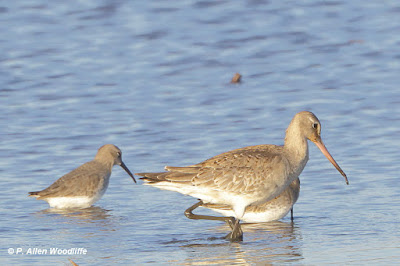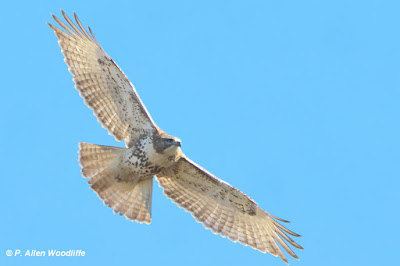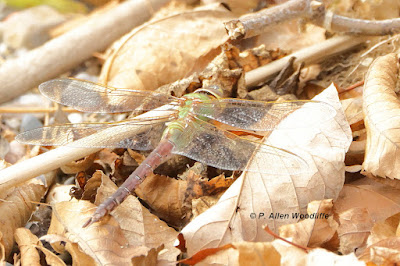Persistence paid off. Some readers may recall me lamenting about stopping by the Keith McLean Conservation Lands on several occasions, trying to find and photograph a Hudsonian Godwit that had been seen by quite a few others, but without success. It got to the point of me thinking HUGO (the four-letter birding code for this species), where did YUGO? And even on this day, the 15th, I again stopped in mid-morning and spent well over an hour searching every possible wet spot within sight, hoping to track it down. I gave up, thinking it was finally gone, but planned to stop in a few hours later, before returning home.
And there it was! I concluded by checking other reports, that it was an afternoon bird. I have no idea where it and the other shorebirds spent the earlier part of the day.
There were some Dunlin around as well.
For a size comparison, here are both HUGO and DUNL.
This individual was distinct due to some malformation at the tip of the bill. It didn't seem to interfere with its feeding, at least to the eyes of human observers, although the actual bird may have felt a little less efficient at feeding. But it had adapted.
....and was quite cooperative for the camera. These photos were barely cropped.
On my earlier visit that day, I had to satisfy my photographer's urge with a cooperative Great Blue Heron. Not quite the same satisfaction as a HUGO, but....
In between visits to this site, I spent a few hours at Rondeau, not surprisingly, and had the satisfaction of seeing and photographing a few birds. Robins were widespread....
Pileated Woodpeckers are more often heard than seen, at least not seen in a position for other than a record photo.
Yellow-bellied Sapsuckers were around here and there, but for the most part seem to have moved on.
A few Yellow-rumped Warblers can still be found, with a little persistence.
On a day with promising WNW type winds, I spent a bit of time in a good location to watch for late season raptors carrying on with their migration. I got a distant Bald Eagle...
....and several Red-tailed Hawks, among other things.At Erieau, I photographed one of the dozens of Red-breasted Mergansers in the slip...
...as well as a Bonaparte's Gull, of which there were several hundred. I was hoping to see a Little Gull, but it was not to be on this day, or at least not while I was there.A bit more recently when I was out at Rondeau on a quiet, cool and overcast day, I encountered several late moths fluttering about and coming to rest on some leaf litter. They were Bruce Spanworms.....
A White-breasted Nuthatch came to investigate me, pausing long enough for a photo.
I had been on the lookout for White, or Paper Birch at the park. Someone had inquired about where to find one in the park, and although I knew I had seen a few over the years, I was hard-pressed to find one on the spot. They are much more visible when the leaves are off the trees, as they are not abundant. They have somewhat specific soil requirements, so are best found between Harrison Trail and Lakeshore Road. On my travels along these two roads, I have located more than a dozen individuals, although most are fairly small diameter trees. These next two individuals were about 25-30 cm in diameter.
On yet another short term visit to the park, I spent some time in both the campground as well as the east South Point Trail and photographed a few things I encountered. European Starlings, shown first, are not very popular with anyone, but they are somewhat attractive in the seasonal speckled plumage. This one, along with a dozen others, were feeding on bittersweet fruit.
A couple of House Finches, year-round residents, were noted feeding on red cedar berries.
A close relative, the Purple Finch, is migrating through as of late, and I managed to capture a few photos of this female.....
...and this Ruby-crowned Kinglet flitted about almost non-stop, as they typically do, so getting even one shot like this is tricky and infrequent.
White-throated Sparrow, shown next, is one of the commonest sparrow species around these days.
Just a short time before I was getting ready to post this blog today, a friend and former co-worker alerted me to the presence of a Greater White-fronted Goose along Mud Creek here in Chatham.
Thanks, Fred!
I had been on the lookout for this species at various locations where
there were concentrations of Canada Geese, as the occasional Greater
White-front will show up with them, so I wasn't going to pass up this
opportunity so close to home. And there it was, showing its 'speckle'
belly, pinkish/orange bill and white frontal area of the head.
If you would like to subscribe, or unsubscribe, to Nature Nuggets, send an email to: prairietramper@gmail.com






















































